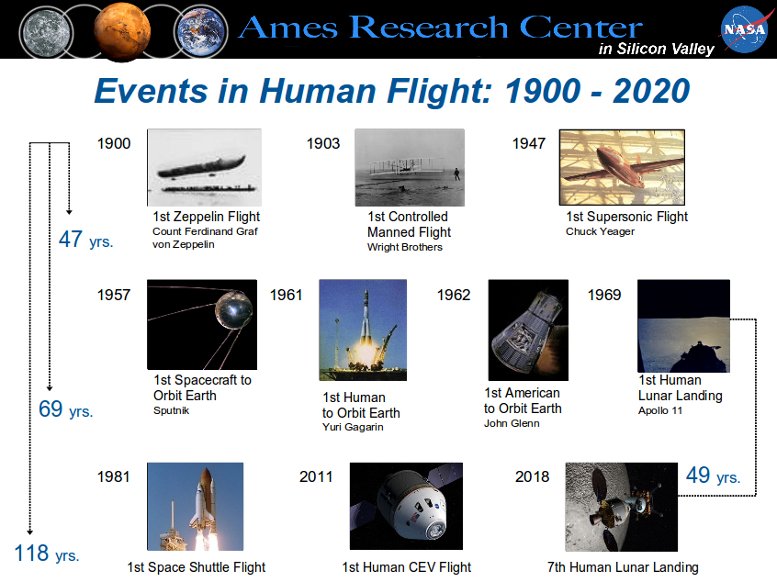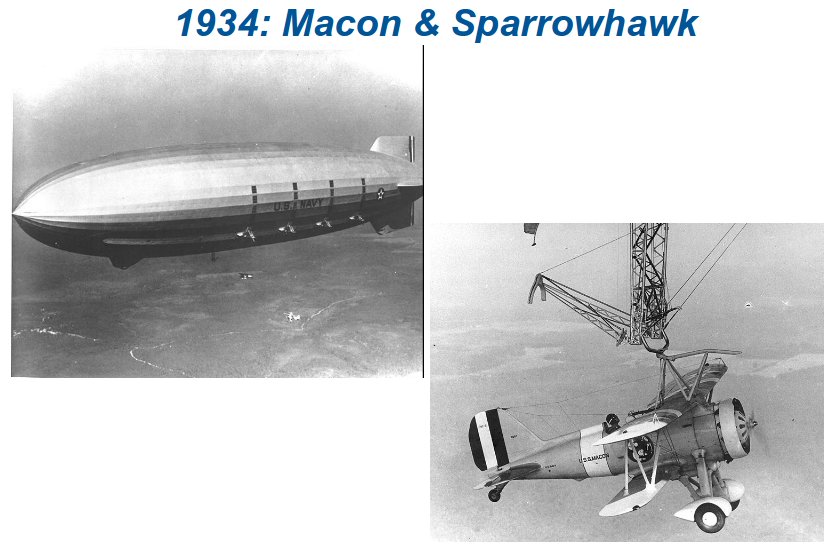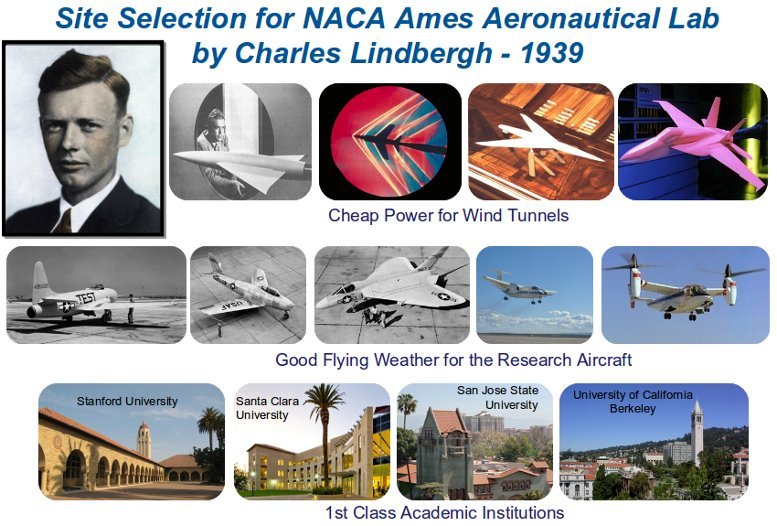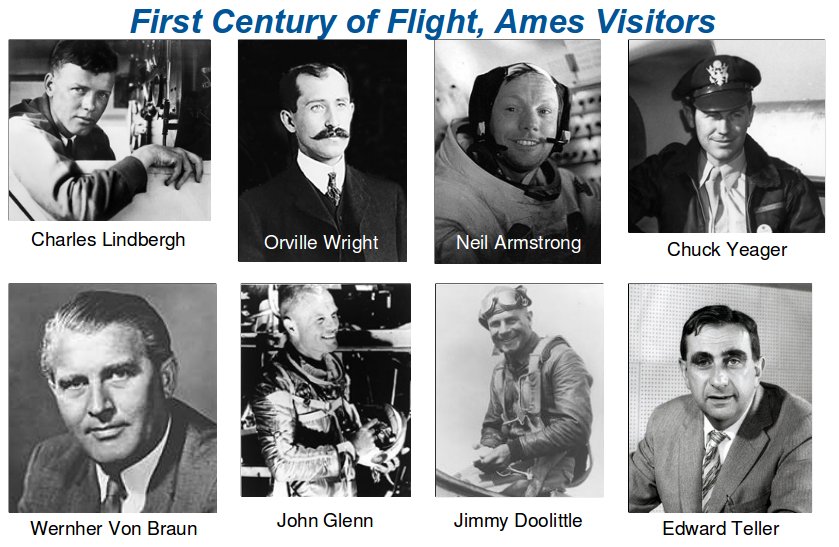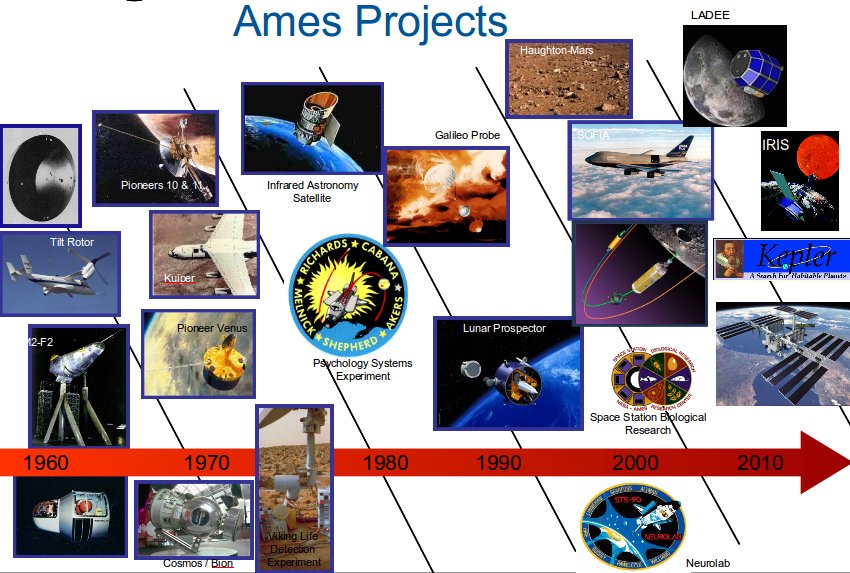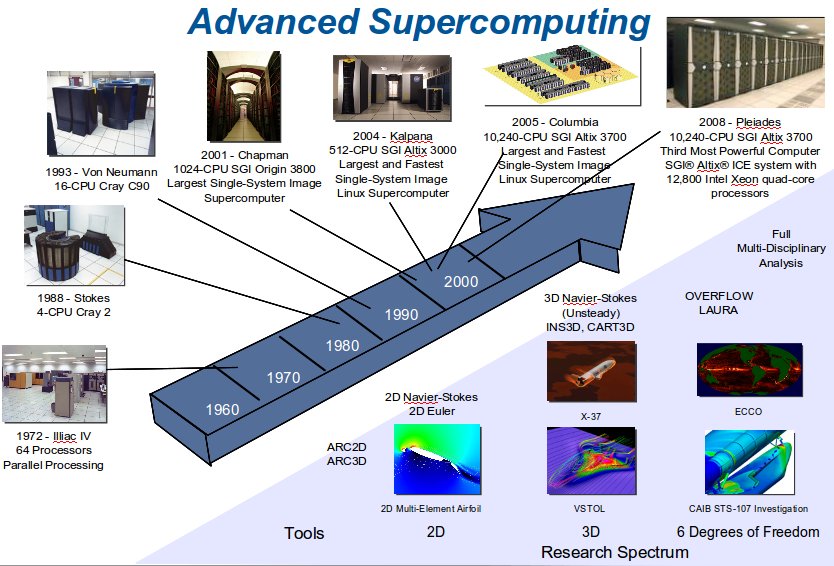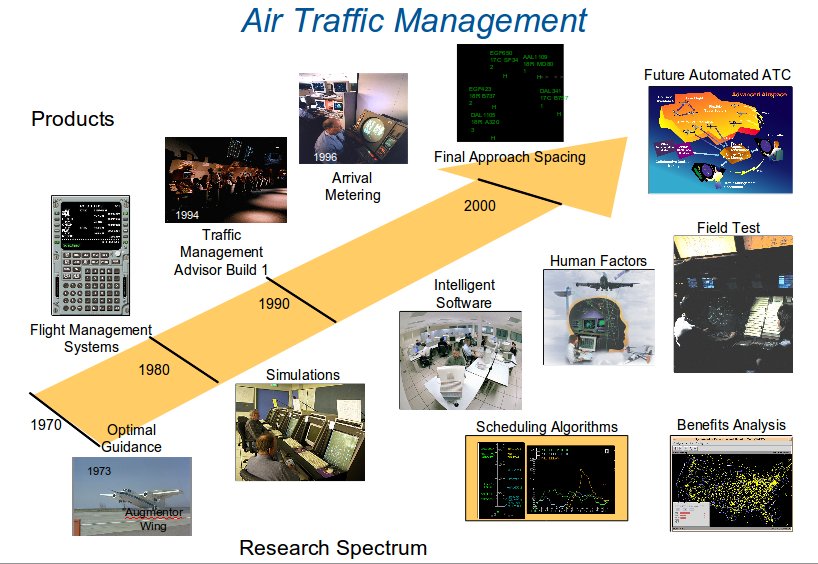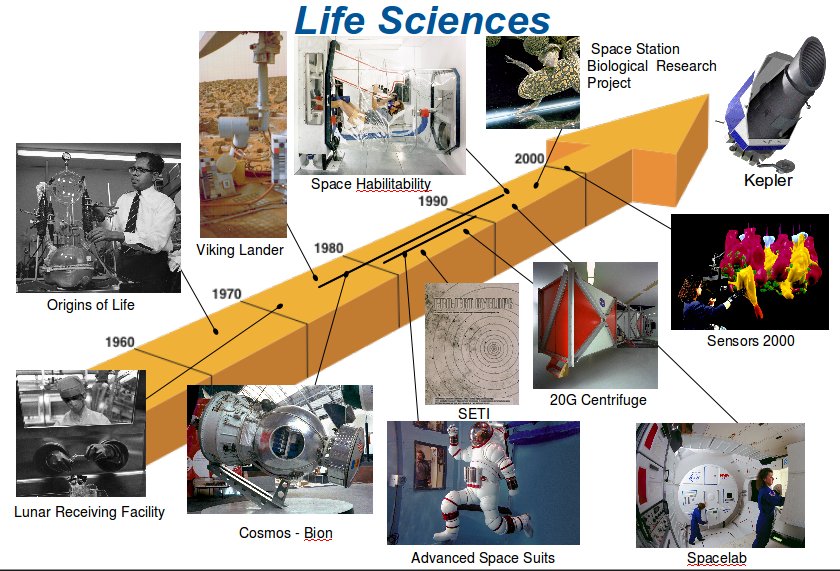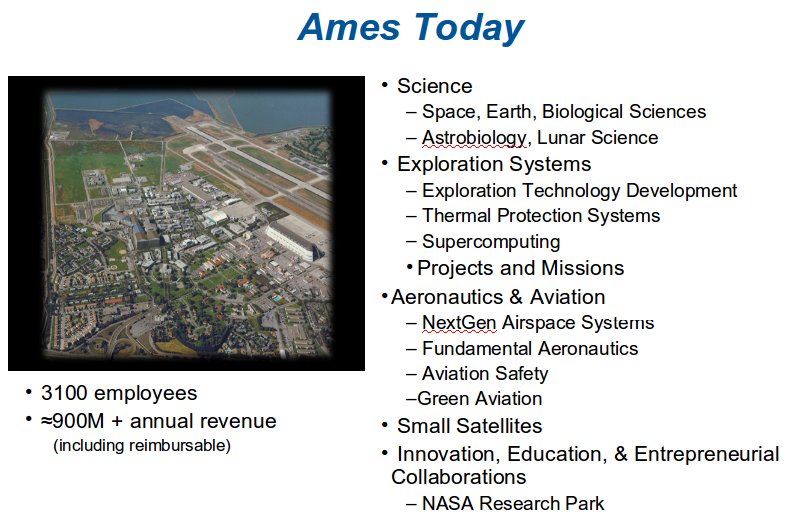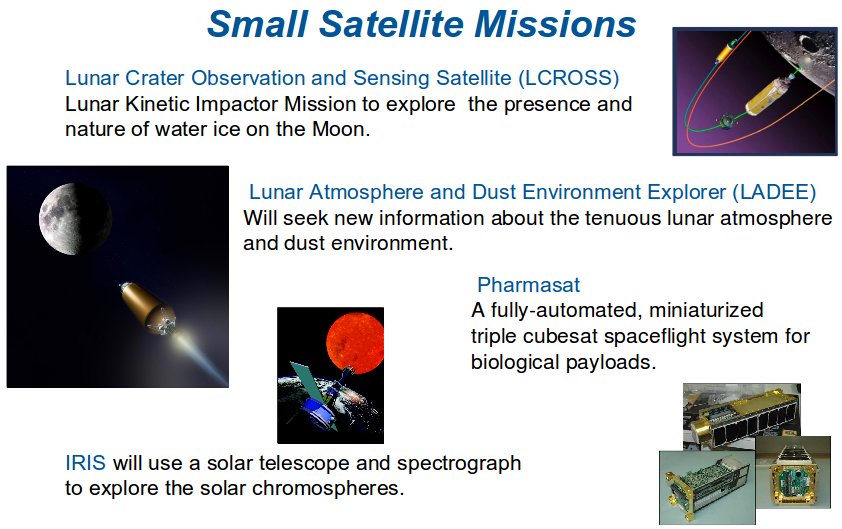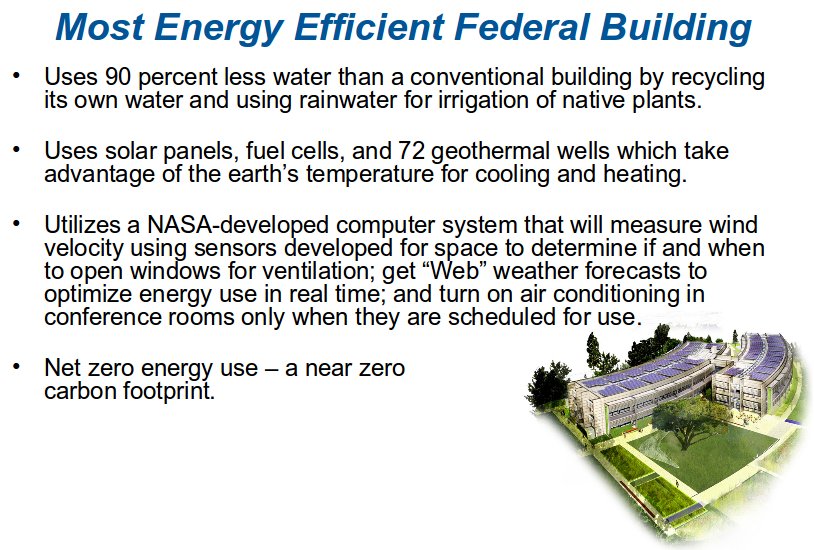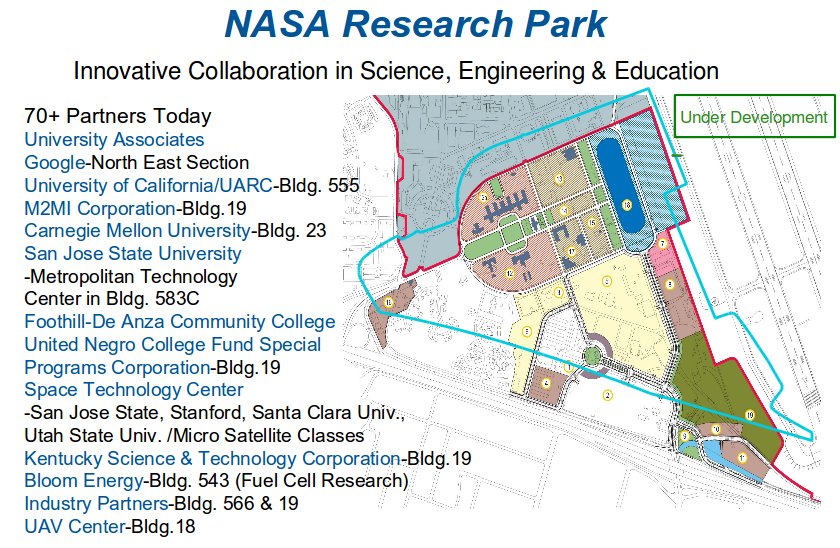> John W. (Jack)
Boyd
> April 10
>
> The History of NASA Ames: The Freedom to Learn
>
>
> Jack Boyd currently serves as Senior Advisor to the Center
Director of
> the NASA Ames Research Center, and also serves as Ombudsman and
> historian. What makes Jack "Senior" is that he started at
Ames as an
> aerodynamicist in 1947, where he worked in its famous high speed
> research branch that developed and tested the blunt body shape
that
> has allowed all spacecraft to withstand the heat of re-entry on
their
> journey home. His career spans almost the entire history of the
Center,
> including a stint as Ames Associate Director. He was recently
inducted
> into the 70th anniversary class of the NASA Ames Hall of Fame and,
> among his many other awards, in 2008 he received the NASA
Headquarters
> History Division Award for his significant contributions to NASA
history.
> Staffed by historians and archivists, the Ames History Office
explores
> ways to make the Center's past relevant to its future by
supporting
> research and writing, and helping to preserve and provide access
> to records and artifacts related to the history of the Center.
>
> Jack will describe the mission of the History Office and reflect
on his
> rich career in the free-wheeling, collaborative environment at
Ames,
> where future innovation is strengthened by keeping a connectedness
> with the past.
>
Jack explained that a lot of the
milestones listed in the first slide had been worked on at NASA Ames.
The wind tunnel work to design the airplane for the 1st Supersonic
flight was done here. A lot of the computer work for the lunar flight
plans happened here. Astronaut suits came from this area.
It didn't start like that. Before WW II Moffett Field was just a Navy
airfield, most known as the home of the Macon, a huge Helium dirigible
with the capability of launching and retrieving Sparrowhawk biplanes
(mostly intended for re-con) while high above the ground.
Then in the late 1930s Charles Lindberg
got wind of the German flight research while touring Europe and
convinced
the US Govt. that it needed to start a competitive program. He wanted
it on the west coast so that it would be as far from Europe as possible
and settled on this area for the following reasons:
NACA settled here in 1939, and has been
a force in flight innovation ever since. Many important names from our
history have visited.
Boyd had interesting anecdotes about
all of these people. He remembered meeting Orville Wright just once.
Later he took William Shatner on a tour of the facility. When Shatner
found that he knew Teller, and that the guy was local, Shatner wanted
to meet the father of the Hydrogen bomb. Boyd called to see if it was
okay
to bring a friend over. Teller asked "who is this guy?", and when Boyd
explained that it was Captain Kirk from Star Trek he said "YES!" They
talked for two hours, and both enjoyed it a lot.
Innovations that Ames is responsible
for include swept back wings, blunt reentry capsule shapes used by
Mercury through Apollo spacecraft, Pioneer (the first spaceship to
leave the
solar system), Kepler (a spaceship looking for habitable planets out
there),
LCROSS, which figured out there is water on the moon, tilt rotor
aircraft, and others too numerous to list. Ames still has the largest
wind tunnel on this planet.
Ames still has the 6th most powerful
supercomputer on our planet.
NASA Ames has done a lot to optimize
the air traffic control network/system.
There are many aspects to the search
for extraterrestrial life at Ames.
This slide gives you an idea of the
current size of the organization.
Because of extensive budget cutbacks,
Ames has to work on small satellite missions for at least the near
future. Boyd thinks that unless we discover life out there somewhere
it's unlikely that the big projects like another manned trip to the
moon will
happen soon.
They also have the most energy
efficient building that the U. S. Government owns anywhere.
During Q&A a number of things came up:
NASA doesn't plan to have another open
house any time soon. The money isn't there in the budget. Last time
they did it they expected 20,000 people, but 200,000 showed up. They
even ran out of water. The demand is there, and it was good for the
image, but it is difficult to find the money.
To visit another planet will require a
breakthrough in propulsion technology. To get to Mars with the boosters
we have would take 9 months, and getting back would take another nine
months.
Likely a mission would take two
years in cramped and unhealthy conditions. Maybe a one way trip for
colonists would make more sense. Boyd would love to be in the first
crew.
